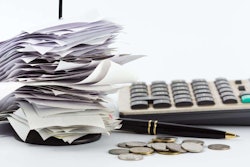
Owner-operator business services firm ATBS signaled this week that the Internal Revenue Service will greatly simplify the process for owner-ops taking advantage of new bonus per diem deductions, available as a result of the federal government's efforts to stimulate recovery in the restaurant/hospitality industry.
In an email to clients, the organization noted complicated daily percentages of restaurant meals have been deemed unnecessary for owners to track. "There will be no need for owner-operators to determine any percentage of meal purchases from a restaurant as all qualified and substantiated per diem will be treated as 100% from a restaurant and 100% deductible," ATBS said.
Recently retired Overdrive Editorial Director Max Heine laid out how that tracking process was expected to work as of June this year. Essentially, it allowed whatever share of an owner-ops' meals were eaten at a restaurant on any given day to be 100% deductible as a share of the per diem -- this year, set at $66 the first nine months of this year, $69 from October 1 forward. Those per diem rates, in a normal tax year, are deductible at 80%, or $52.80 and $55.20 respectively.
At the time of Heine's June story, ATBS Tax Manager Michael Schneider laid out a scenario where an owner-op was away from home for three weeks, eating three meals a day for a grand total of 63 meals. "If you purchased 28 of those meals at a restaurant, then 44% of your meals would be considered purchased at restaurants,” he said.

Under the formula ATBS had worked out with the IRS at the time, 44% of the per-diem for that three-week period would be deductible at the 100% rate. (Deductible amounts in this scenario shown below in bold.)
21 per diem days X $66 = $1,386
44% of $1,386 = $609.84
The remainder, 56%, would then be deductible at the 80% rate.
56% of $1,386 = $776.16
80% of $776.16 = $620.93
If you think that could get pretty complicated over the course of an entire calendar year, you'd be right, particularly given the per diem basis change as of October 1 to a daily $69.
When ATBS President Todd Amen joined Overdrive for the October 21 live session, Amen noted the firm was basically for the first time urging most owner-operators to track meals and keep the receipts (for back-up in the case of an audit) to reap added savings under the formula. The relevant part of the discussion starts at the 50:30 mark in the video.
Amen noted today, though, that the IRS's recent clarification dramatically simplifies matters for owner-operators, also delivering tax savings. In the above three-week example, it will mean that the entire $1,386 worth of per diem is deductible, or almost $160 more than under the complicated percentage formula based on actual restaurant meals.
Spread out over the entire tax year, take another example Schneider laid out in prior reporting: Assume 300 per diem days in 2021, with a fourth of them, or 75, occurring after the October 1 per diem hike to $69. Given to claim 100% per diem for those days an owner-operator will only have to keep records -- logbooks, settlements, the like -- proving time spent on the road, the calculations (and the tracking, of course) get much simpler.
225 days X $66 = $14,850
75 days X $69 = $5,175
Total deductible for the year = $20,025
That's $4,005 higher than it would otherwise be with standard 80% deduction rules in place. For a taxpayer in the 22% marginal tax bracket, applicable to individual earners with annual income between around $40K up to almost $90K, that's an extra $900 that will stay in the business account.
For full-year 2022, at the $69 per diem rate, savings over standard $80 percent treatment will top $1000 for those taxpayers among owner-operators.
[Related: Strong freight, rates environment expected to last through 2022]
ATBS also emphasized in its recent notice about these changes, which you can read in full here, that so-called "partial days" away from home are deductible as well -- at a reduced rate. For most owner-operators, ATBS said, a partial day should be claimed on days you left home for at least an overnight -- and days you came back, having overnighted elsewhere. "On the days that you depart and the days that you arrive at home," ATBS said, "you must claim a partial day allowance instead of a full day allowance." That's computed as 3/4 of the standard allowance, or $51.75 for today's $69 per diem.
The firm recommends keeping a calendar for your per diem tracking, marking days totally away from home with an X and partial days with a single slash. For clients, the ATBS mobile app now includes a per-diem-tracker function that simplifies tracking and output directly to ATBS at tax time.
As Todd Amen noted about all of the changes in the webcast video replay available above, make sure your accountant is on top of it, "whoever you use for your tax services," he said. "Ask the right question and do the research to save money on taxes." Given how late in the tax year this most recent change is coming, there's likelihood it could go unnoticed.
[Related: How to save taxes, gain biz-management dividends via an S Corp structure]










